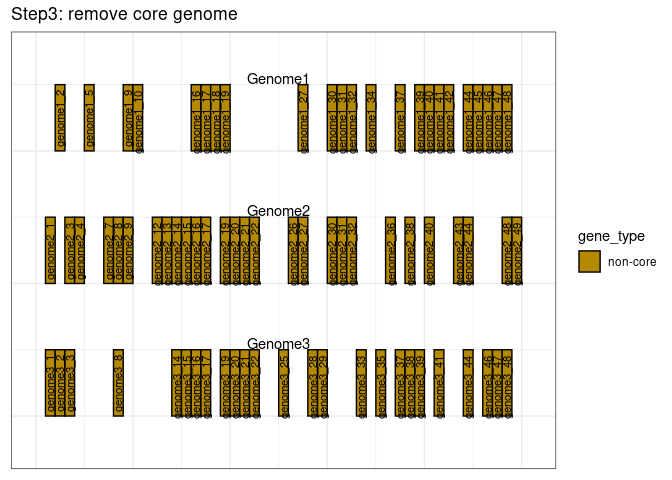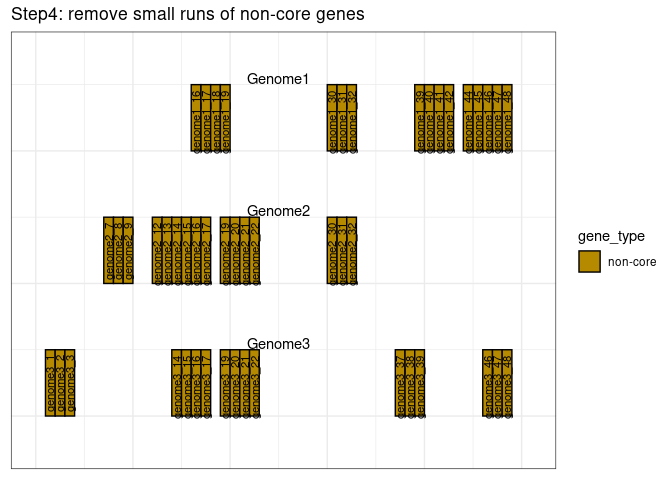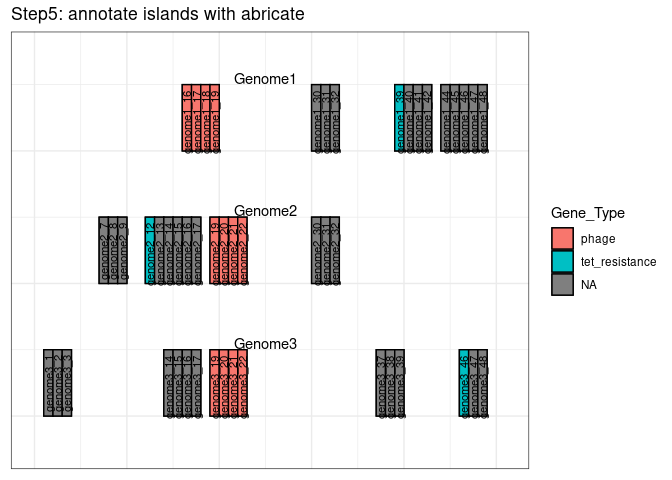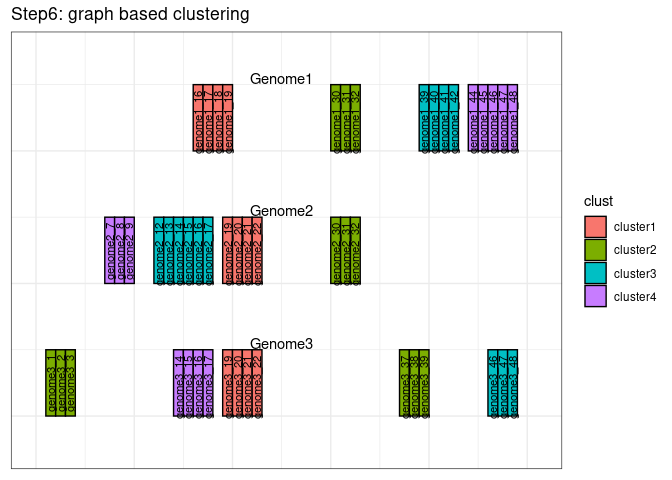Genomic Islands from Roary Pangenomes.
This program is supposed to identify ‘genomic islands’ from roary pangenomes. The intent was to try and identify units of horizontal gene transfer within very closely related strains using a pangenome framework.
In general, this type of analysis works best for very closely related strains, for example, a collection of Salmonella enterica serovar typhimurium.
In theory, this program will work on pangenomes of any size, though things get very messy with too many genomes or genomes that are too different from one another.
Prerequisites:
-
A pangenome calculated by roary: Any pangenome should work, even those that do not split paralogues (the -s option of roary).
-
the *.gff files used by roary to create the pangenome. I have only used those produced by prokka but others may work.
If all you have are nucleotide fastas then you can use the included
pan_pipe script to take care of the whole pipeline from annotation
with prokka to pangenome calculation with roary to genomic island
extraction with gifrop.
create new conda environment
conda create -n gifrop python=3.7
activate new environment
conda activate gifrop
install gifrop
conda install -c conda-forge -c bioconda -c defaults gifrop=0.0.9
or
Install the dependencies and make sure they are in your path:
- GNU parallel
- abricate
- You will also need these custom abricate databases - R 3.6.* and these R packages:
- ‘dplyr’,‘tidyr’,‘readr’,‘tibble’,‘ggplot2’,‘purrr’,‘Biostrings’,‘BSgenome’, ‘igraph’, ‘parallelDist’, ‘digest’ - roary (if using pan_pipe script)
- prokka (if using pan_pipe script)
- make the scripts from this repo available in your path
- Navigate to a directory containing prokka annotated gff files and
the output of roary, specifically the
gene_presence_absence.csvfile. - run gifrop:
gifrop --get_islands --threads 8
- all outputs go to the
gifrop_outdirectory.
The included script pan_pipe is a complete pipeline for extracting
genomic islands from a collection of nucleotide fastas.
These are the basic steps:
1) Annotate with prokka
2) Calculate pangenome with roary
3) Extract genomic islands with gifrop
You are able to pass arguments to prokka, roary and gifrop using quoted
strings of arguments, see pan_pipe --help for more information.
-
remove the core genome from the pangenome.
- This removes any gene that occurs in all isolates exactly 1 time. This means that genes that only occur in some genomes and genes that occur twice or more in any genome are currently kept for consideration.
- Alternatively, you can find genomic islands relative to a reference with the '--reference / -r' flag. - In this mode, any genes present in the reference are removed from the pangenome.
-
Identify strings of consecutive genes (locus tag orders)
-
Remove strings that contain fewer than the minimum number of genes.
- These remaining strings of consecutive genes are ‘genomic islands’ ‘pan-genomic islands?’
-
Classify pangenomic islands by running abricate with the following databases:
- The NCBI amr database packaged with abricate.
- Megares2.0 database (bc it has metal tolerance)
- plasmid finder (replicon genes)
- vfdb (virulence genes)
- ProphET phage db
-
Cluster pangenomic islands, this can get messy.
- De-replicate islands with identical gene content
- calculate pairwise distances between all unique islands using two separate distance metrics
- Simpson (AKA overlap distance), and Jaccard distance.
- Convert distances to similarities. - make two graphs where pangenomic islands are nodes and they are joined by edges representing their similarities to other islands. One graph for Overlap Coeficient and one for Jaccard. Edges with 0 weight are removed from these graphs.
- four levels of clustering:
- primary clustering: Uses the Overlap Coeficient graph any island connected by non-zero weight edges are in the same primary cluster.
- secondary clustering: First The Overlap Coeficient graph is pruned to remove edges with weights less than 0.5. an overlap similarity of 0.5 linking two islands means that at least half of the genes in the smaller island are present in the larger island.
The Louvain clustering on algorithm is then applied to detect densly connected communities.
- tertiary clustering: The Overlap Coeficient graph is pruned to remove edges with weights less than 0.75. an overlap similarity of 0.75 linking two islands means that at least 3/4 of the genes in the smaller island are present in the larger island. The Louvain clustering on algorithm is then applied to detect densly connected communities. - quaternary clustering: The Jaccard Coeficient graph is pruned to remove edges with weights less than 0.75. a jaccard similarity of 0.75 linking two islands means that both connected islands contain at least 75% of the total gene content of both islands combined.
The Louvain clustering on algorithm is then applied to detect densly connected communities.
-
output pangenomic island info.
All outputs go to thegifrop_outfolder.
main outputs:1. clustered_island_info.csv 2. pan_with_island_info.csv 3. pan_only_islands.csv 4. figures directory - some basic exploratory figs 5. All the pangenomic islands - as a single fasta file 'All_islands.fasta' - can be split into individual fastas if requested. 6. logfiles
| file | description |
|---|---|
| clustered_island_info.csv | This is a csv file that contains a detailed description of every genomic island detected in this pangenome. |
| pan_with_island_info.csv | The roary ‘gene_presence_absence.csv’ file annotated with information about which genomic islands and clusters the genes belong to. |
| pan_only_islands.csv | The same as the previous file but filtered to only include genes that occur on at least 1 genomic island |
Draft assemblies
gifrop can handle incomplete, draft assemblies, but the genomic islands
it identifies will never span contig breaks. That is, if there is a
genomic island in your assembly that is divided across two contigs, it
will be split into 2 different genomic islands.
Complete genomes
If you input complete genomes, (with closed circular chromosomes) and a
genomic island spans the arbitrarily chosen start/end coordinates, it
will be split into two genomic islands.
Combining of adjacent/nested genomic islands
If there is a situation where two distinct genomic islands are inserted
adjacent to one another or one nested within another etc., they will be
treated as one genomic island.
Error when identical contig names in different assemblies
- link abricate results to pangenome, use coords of hits with gffs to get loc_tags?
- Include example data?
Suggestions welcome.






